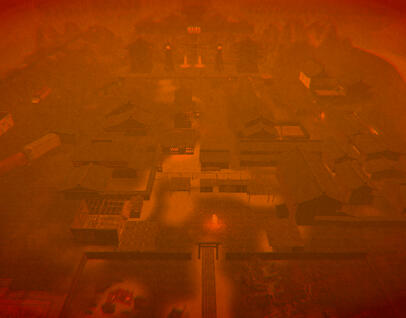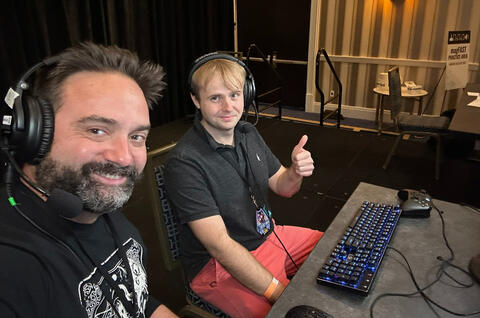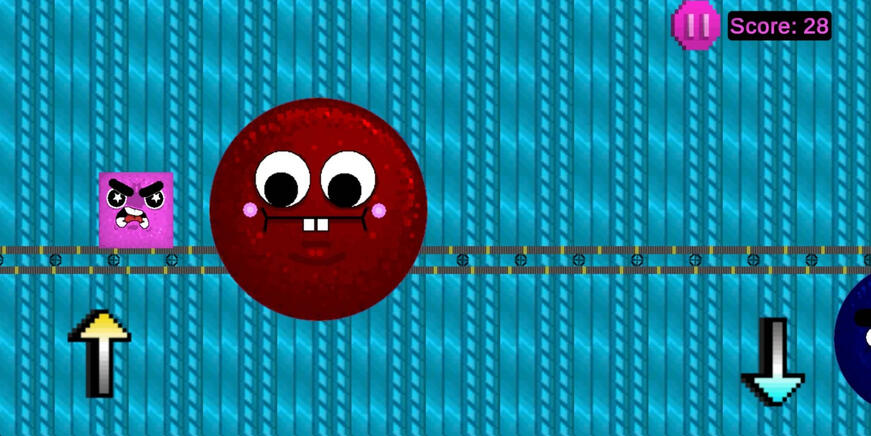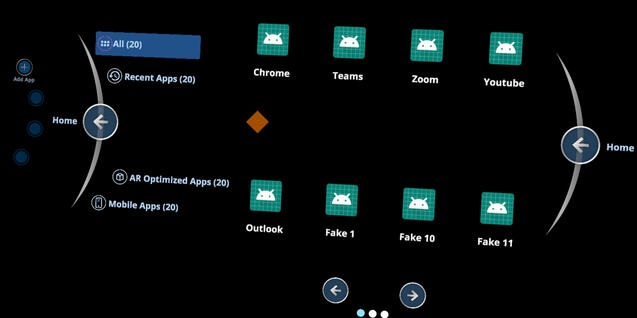
About Me
I am a professional Unity developer with a lifelong passion for games. I have been working at Lenovo since 2018 on their AR/VR projects, and independently have completed various game projects. My favorite game genres are RPGs, platformers, and story-based exploration games. I am also a huge fan of TCGs being a former Magic semi-pro and an accomplished Final Fantasy TCG competitor.Below you will find a large deal of my work, but here is a link to a more traditional resume as well.
Atama (On Steam, Itch.io, PlayStation, and Xbox, 2022)
Atama is an indie horror stealth and puzzle “second-person perspective” game where you look through the eyes of floating heads haunting a Japanese village to help avoid their gaze and solve puzzles as you search for your lost aunt and family heirloom.

An early area of the game with an enemy in the distance.

An example of looking through the eyes of a monster. In this example you can see the axe you need to progress, and the moped in the background serves as a landmark to know where to avoid.

A late game scene with a new enemy whose view can be used as a sort of “map” of the area.

The view when looking through the eyes of "the Overseer".

The view when looking through the eyes of an angler fish enemy.

Late in the game you gain the ability to stun enemies through their view as seen here.
I served as co-director and lead developer for Atama and was responsible for the majority of the code, level design, and set-dressing/world-building, but I also dabbled in everything from sound design to writing. We worked as a small team of around six for two years fully remote as a side project in addition to all of our jobs and busy lives. Atama additionally features multiple endings, three difficulties including a hardcore mode and a story-mode, and a post-game developer commentary mode with audio nodes and more. In 2024 we teamed up with a porting company and released on Xbox and PlayStation.

The team met for the first time in person at MAGFest 2023 after the release of the game a few months prior where we had a booth.

MAGFest requested us to speedrun our own game as part of their "MAGFast" stream, and the run can be viewed here.

In April 2023 I went to East Coast Game Conference and gave a talk about the process of completing a full game project as a hobbyist. Here is a VOD of it.
Atama Ikuto (Free on Itch.io, GitHub, 2025)
Atama Ikuto is a short prequel to Atama made in Unreal. Set in 1883, Atama Ikuto provides a more cinematic experience than the original with more buildup and events. Ikuto has always had visions, but eventually they led him to abandon his family and wander... today, he has finally reached the town the visions have been leading him to.

Ikuto has been following visions of crows that have led him to Akikawacho. Partway into the game, you can look through the vision of a crow and it plays a scene of the crow flying around before being caught by a monster.

I utilized Unreal's MetaHuman Creator to create the player model who has a few animations and the titular floating head monsters and their animations. You can usually only catch glimpses of them in the game but I'm happy with the way they came out.

The story ties in directly with the original, but it also functions as a standalone episode.
I had wanted to learn Unreal Engine for a long time, so I eventually took a fairly sizeable Udemy course to give myself a start. After completing that, I wanted to create my own project, so I decided it would be cool to make an "Atama But In Unreal!" type project like the sort of videos you often see on YouTube. For this project I recreated a majority of the systems that were in the original like remote viewing, dynamic movement audio, interaction systems, and basic enemy AI and detection.
One of my main goals was to have the game offer a different experience than the original. Some of the differences include it involving a lot more build-up to the monsters, more in-depth cutscenes and events, jumping, moveable objects, and higher fidelity visuals. The GitHub repo is also public, so please take a look.
The Portraits (Free on Itch.io, 2023)
The Portraits is a short horror-experience inspired by a classic creepypasta. You take control of someone far from home who nearly fell asleep at the wheel and decides to stay the night at a horrible AirBNB. Upon arriving, the power is out and the walls are adorned with freaky portraits that hold a secret.

A ‘portrait’ in the bathroom. There is a scene where you are on the toilet and your gaze keeps slowly (and building up to be faster) pulling towards the portrait–which in turn causes postprocessing effects, distortions, and sounds.

A portrait in the back of the bedroom.

The morning with a small bit of sunlight seeping in as the reveal comes that the “portraits” were windows the whole time.
After releasing Atama I had the sudden desire to just make a little project as a creative outlet and see how easily I could make something using the Atama code and resources. I made the majority of the project in a week but slowly finalized it after as I received versions of the titular “portraits” drawn by two artist friends of mine. While it re-uses Atama resources, there are some different things here too like special effects that play while looking at the portraits, a scene where the player camera’s view is forced slowly onto one of the portraits, enemies using Unity’s built-in NavMesh system, and the enemies being 2d images that turn to face the camera rather than being 3d models. The game is also PS1-style so I tried a few techniques for that like lowering the bitrate of sounds, decimating existing models, lowering the resolution of textures, and messing around with PSX texture warping shaders.
Sphere Fear (2019)
Sphere Fear is a simple-but-fun auto-scrolling arcade-style platformer where you can jump or super-jump up and down to avoid an oncoming onslaught of enemies and each time you avoid one the game gets slightly faster.

When I graduated college in 2016 the company I worked for at the time (McClatchy Interactive) laid off their entire mobile team for an outsourcing endeavor. While I searched for work, I wanted to do something productive so I decided to make a simple game and intended to release it on Android with ads to get experience with Google AdMob, the Play store release process, and just to have something complete. I mostly completed the project in 2016, but then I got a new job working in QA Automation at Measurement Incorporated and it was still using very rudimentary developer assets, so it went un-released. Then, in 2019 I decided to finally finish the little project and release it.
AR/VR Work (2018-2024)
From 2018 to the end of 2024, I worked at Lenovo on their AR and VR projects primarily working on user-facing pages for controlling the devices. All three devices that I worked on for Lenovo (two AR and one VR) were Android-based with a large amount of the work being integrating Android features and settings into the AR/VR space, often involving recreating large portions of Android settings into Unity app content. This gallery is far from exhaustive, but should provide some context on the sort of work I did at Lenovo.

One of my first tasks at Lenovo was to create an interface to allow for users to connect to basic Wifi types on their AR glasses. This meant I also had to create an OSK (On-Screen Keyboard) to allow for this.

Throughout the years, I've created a few different onboarding (OOBE) apps both to handle initial setup and to introduce user to the controls of the devices.

This is an app selection page I made that includes functionalities like pinning favorite apps, filtering out certain apps, deleting apps, and opening them.

Brightness and volume widgets. These settings could also be modified by hardware buttons, so keeping their display in sync with the Android settings was an important part of the task.

For all three devices I've worked on at Lenovo I have worked on interfaces for handling Wifi connections, but the most recent (VR) device has been the most extensive involving all the complex options you would find on an Android phone.

I was tasked with creating a shortcut wheel that follows your VR controller to be able to use the OSK faster and more easily. It works like a radial menu allowing you to access buttons like backspace much faster. You can also see the updated OSK.